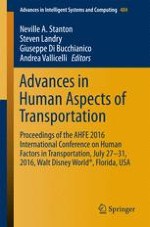2017 | OriginalPaper | Buchkapitel
Using Adaptive Interfaces to Encourage Smart Driving and Their Effect on Driver Workload
verfasst von : Stewart Birrell, Mark Young, Neville Stanton, Paul Jennings
Erschienen in: Advances in Human Aspects of Transportation
Aktivieren Sie unsere intelligente Suche, um passende Fachinhalte oder Patente zu finden.
Wählen Sie Textabschnitte aus um mit Künstlicher Intelligenz passenden Patente zu finden. powered by
Markieren Sie Textabschnitte, um KI-gestützt weitere passende Inhalte zu finden. powered by
